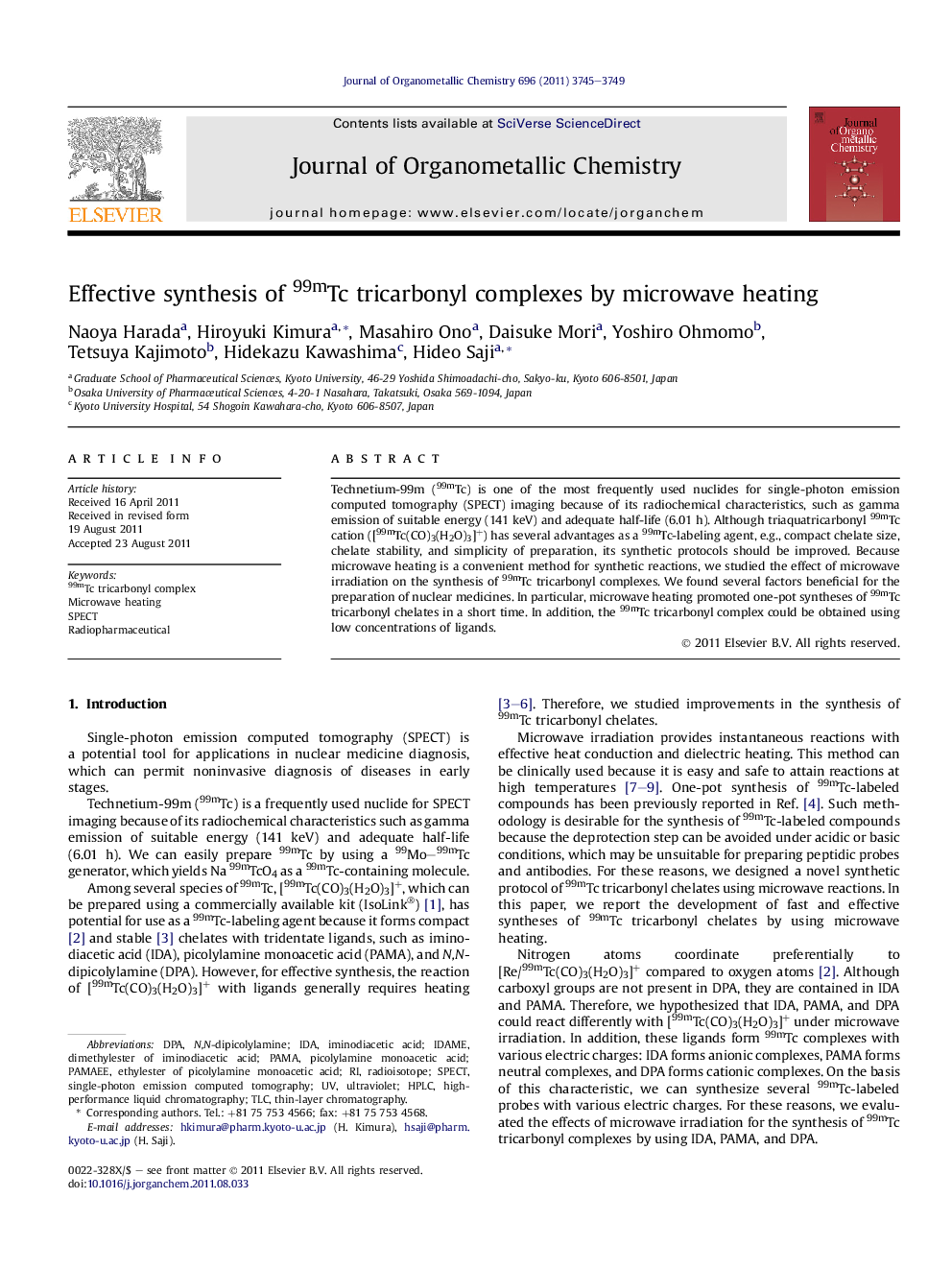| Article ID | Journal | Published Year | Pages | File Type |
|---|---|---|---|---|
| 1325114 | Journal of Organometallic Chemistry | 2011 | 5 Pages |
Technetium-99m (99mTc) is one of the most frequently used nuclides for single-photon emission computed tomography (SPECT) imaging because of its radiochemical characteristics, such as gamma emission of suitable energy (141 keV) and adequate half-life (6.01 h). Although triaquatricarbonyl 99mTc cation ([99mTc(CO)3(H2O)3]+) has several advantages as a 99mTc-labeling agent, e.g., compact chelate size, chelate stability, and simplicity of preparation, its synthetic protocols should be improved. Because microwave heating is a convenient method for synthetic reactions, we studied the effect of microwave irradiation on the synthesis of 99mTc tricarbonyl complexes. We found several factors beneficial for the preparation of nuclear medicines. In particular, microwave heating promoted one-pot syntheses of 99mTc tricarbonyl chelates in a short time. In addition, the 99mTc tricarbonyl complex could be obtained using low concentrations of ligands.
Graphical abstractDecrease in concentration of ligands by microwave heating.Figure optionsDownload full-size imageDownload as PowerPoint slideHighlights► 99mTc tricarbonyl complexes can be used as radioactive tracers for SPECT. ► Microwave technology has been favorably applied to enhance radiolabeling reactions. ► Three tridentate ligands (DPA, IDA, PAMA) were selected in this study. ► 99mTc tricarbonyl complexes were obtained more effectively by microwave heating. ► 99mTc tricarbonyl complexes were obtained using low concentrations of ligands.
